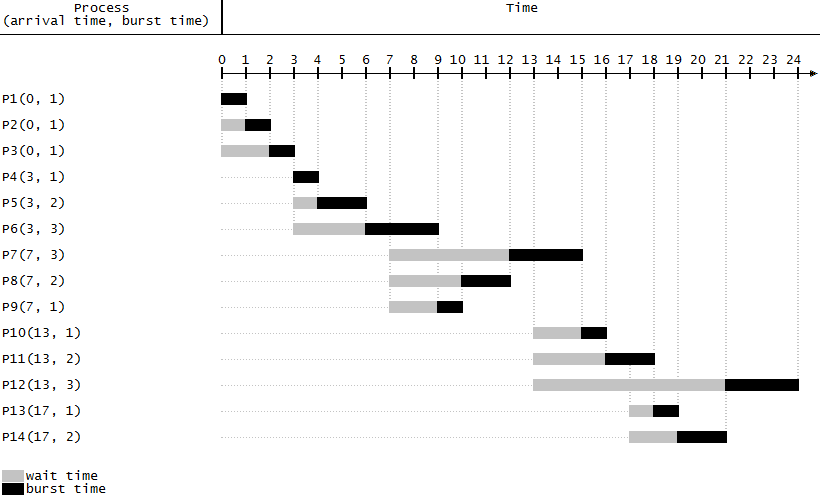Shortest job next on:
[Wikipedia]
[Google]
[Amazon]
 Shortest job next (SJN), also known as shortest job first (SJF) or shortest process next (SPN), is a
Shortest job next (SJN), also known as shortest job first (SJF) or shortest process next (SPN), is a
Shortest job first scheduling
{{DEFAULTSORT:Shortest Job Next Processor scheduling algorithms
 Shortest job next (SJN), also known as shortest job first (SJF) or shortest process next (SPN), is a
Shortest job next (SJN), also known as shortest job first (SJF) or shortest process next (SPN), is a scheduling policy
In computing, scheduling is the action of assigning ''resources'' to perform ''tasks''. The ''resources'' may be processors, network links or expansion cards. The ''tasks'' may be threads, processes or data flows.
The scheduling activity is ca ...
that selects for execution the waiting process
A process is a series or set of activities that interact to produce a result; it may occur once-only or be recurrent or periodic.
Things called a process include:
Business and management
*Business process, activities that produce a specific se ...
with the smallest execution time. SJN is a non- preemptive algorithm. Shortest remaining time is a preemptive variant of SJN.
Shortest job next is advantageous because of its simplicity and because it minimizes the average amount of time each process has to wait until its execution is complete. However, it has the potential for process starvation for processes which will require a long time to complete if short processes are continually added. Highest response ratio next is similar but provides a solution to this problem using a technique called aging.
Another disadvantage of using shortest job next is that the total execution time of a job must be known before execution. While it is impossible to predict execution time perfectly, several methods can be used to estimate it, such as a weighted average of previous execution times. Multilevel feedback queue In computer science, a multilevel feedback queue is a scheduling (computing), scheduling algorithm. ''Scheduling algorithms'' are designed to have some process running at all times to keep the central processing unit (CPU) busy. The ''multilevel fee ...
can also be used to approximate SJN without the need for the total execution time oracle.
Shortest job next can be effectively used with interactive processes which generally follow a pattern of alternating between waiting for a command and executing it. If the execution burst of a process is regarded as a separate "job", the past behaviour can indicate which process to run next, based on an estimate of its running time.
Shortest job next is used in specialized environments where accurate estimates of running time are available.
Weighted shortest job first
Weighted shortest job first (WSJF) is a modification of the concept used inagile development
In software development, agile (sometimes written Agile) practices include requirements discovery and solutions improvement through the collaborative effort of self-organizing and cross-functional teams with their customer(s)/ end user(s), a ...
where jobs get weighted with the cost of delay so that the highest valued jobs get done sooner.
Value-flow rate (VFR) is an alternate, more intuitive name given to WSJF which expresses cost of delay and duration using unitless relative "points" rather than actual units of time or money.
See also
* Shortest remaining timeReferences
External links
Shortest job first scheduling
{{DEFAULTSORT:Shortest Job Next Processor scheduling algorithms